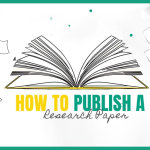When you pick up a book, whether it’s a dense academic tome or a page-turning fiction, you may not give much thought to the index. However, book indexing is critical in assisting readers in finding particular information inside the pages of a book.
This blog article will explain what book indexing is, where you can find it, how it differs from other book features such as a glossary or table of contents, and why it is important. Let’s get started!
What is book indexing?
The act of compiling an alphabetical list of terminology, concepts, names, and themes mentioned in a book, together with associated page numbers, is known as book indexing. This list, known as an index, is a useful tool for readers who want to access specific information or references inside the book quickly. An index, in essence, serves as a guide to the book’s content, making it easier for readers to explore and discover what they need.
Where is the index found in a book?
The book index is typically located at the back of a book, right before or after any appendices or supplementary materials. It consists of an organised list of keywords or phrases, followed by the page numbers where those terms can be found within the book’s main text.
You may also read: 10 Best Books on Writing Every Author Should Read
What is the difference between an index and a glossary?
While both an index and a glossary provide reference points for readers, they serve different purposes:
- Index: An index is a comprehensive list of specific terms and topics mentioned throughout the book, along with page references. It helps readers find the information they’re looking for within the context of the book’s content.
- Glossary: A glossary, on the other hand, is a list of specialised or unfamiliar terms used in the book, along with their definitions. It provides readers with explanations for terminology that might not be commonly understood.
You may also like: How to Become a Writer: A Step-by-Step Guide for Authors
You may also like: 100+ Adjectives That Start With N (With Examples & Definitions)
What is the purpose of indexing?
The primary purpose of book indexing is to enhance the usability and accessibility of a book. Here’s why indexing is essential:
- Facilitating Quick Reference:
Indexing is a crucial tool for readers, as it expedites the process of finding precise information within a book. By organising topics, terms, and references alphabetically with page numbers, an index acts as a roadmap. This feature saves readers valuable time and effort, making it easy to pinpoint the information they need, especially in large or complex books. Whether for casual reading or targeted research, quick reference via indexing significantly enhances the overall user experience. - Enhancing Research and Study:
Book indexes are invaluable assets for researchers, students, and professionals. They serve as treasure troves of knowledge, allowing users to locate pertinent information for their projects, papers, or studies. Researchers can efficiently navigate vast volumes of content, while students can bolster their academic work by referencing specific details, all thanks to the meticulous organization provided by indexes. These tools transform books into valuable research companions. - Improving Comprehension:
Book indexing goes beyond mere convenience; it deepens comprehension. Readers can connect the dots between related topics and concepts by using an index to cross-reference entries. This aids in gaining a holistic understanding of the book’s content. By effortlessly accessing interconnected information, readers can grasp the context and nuances of the subject matter, making their reading experience more enlightening and enjoyable. In essence, indexing enhances the cognitive aspects of reading.
You may also read: Literary fiction vs Genre Fiction: Definition & Examples
What is the difference between an index and its contents?
The table of contents (TOC) and the index serve different purposes:
- Table of Contents (TOC): The table of contents provides an overview of the book’s structure, listing its chapters, sections, and their starting page numbers. It serves as a guide to the book’s organisation and is usually located at the beginning.
- Index: As mentioned earlier, the index is an alphabetical list of terms and topics with page references, helping readers find specific informationke within the book.
You may also like: How Book Editing Can Turn Your Story into a Bestseller?
What is an index in a book?
Let’s take a practical example to illustrate the concept of an index in a book:
Imagine you’re reading a history book about World War II. In the index, you might find entries like:
- “D-Day, 78-85”
- “Eisenhower, Dwight D., 62-65”
- “Holocaust, 120-135”
- “Pearl Harbor, 42-47”
These entries indicate that if you want to read about the D-Day invasion, you can turn to pages 78 to 85 for detailed information. Similarly, you can find information about Dwight D. Eisenhower on pages 62 to 65.
You may also read: List of Top 10 Famous Ravinder Singh Books of All Time
What is the purpose of an index in a book?
The primary purpose of an index in a book is to provide readers with a valuable tool for efficient information retrieval. It enables readers to:
- Locate specific information quickly.
- Cross-reference related topics and concepts.
- Use the book as a resource for research and study.
- Enhance comprehension and understanding of the book’s content.
In the end, book indexing is a sometimes ignored yet critical part of book design and printing. It acts as a link between readers and the information they are looking for inside the pages of a book. So, the next time you use an index to discover that important piece of information in a book, remember how important it is to making your reading experience more efficient and pleasurable.
Frequently asked questions on Book Indexing
In most books, the glossary typically comes before the index. This placement allows readers to familiarise themselves with key terms before using the index to search for specific information. However, the exact order may vary depending on the book’s layout and design.
In academic papers and articles, an index is less common compared to books. Instead, researchers and writers often use citations, footnotes, or endnotes to reference sources and provide additional information. The specific formatting and referencing style may dictate how these elements are incorporated into the paper.
The library catalogue or database is referred to as the index of books in a library. It includes information on all of the books, periodicals, and other items in the library’s collection. Users may search the catalogue by title, author, subject, or keywords, making it easier to find and borrow resources.
Creating an index is a time-consuming procedure that entails locating important phrases and themes inside the book and linking them with the proper page numbers. Indexers, who are generally trained experts, follow particular criteria and principles to assure the index’s accuracy and consistency.
You may also like: Book Writing Tools That Actually Make a Difference
















